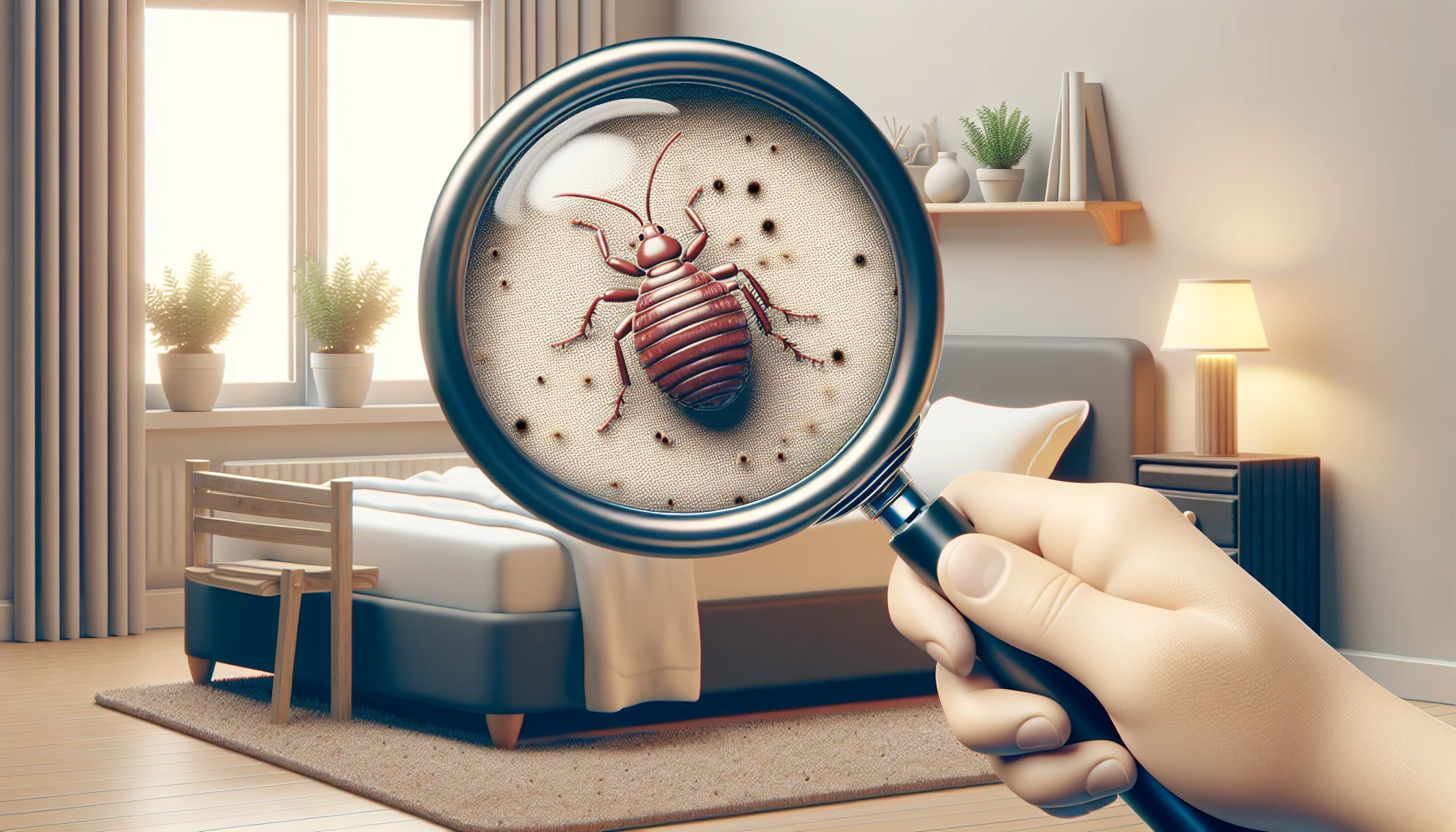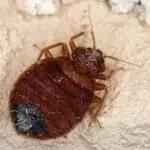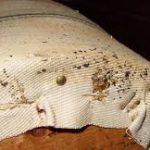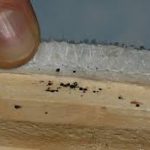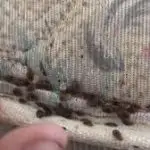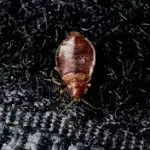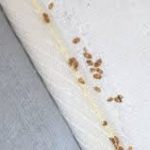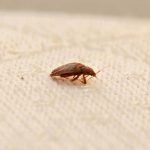Can You See Bed Bugs? Spotting the Pests in Your Home
Introduction to Bed Bugs
Ever heard the saying “sleep tight, don’t let the bed bugs bite”? Well, it turns out there’s more truth to that old adage than one might think. These tiny critters have made a big comeback and have been turning peaceful slumbers into itchy nightmares. But before you go flinging off your sheets in a frenzy, let’s dive into the world of bed bugs and understand why seeing them with the naked eye can be as challenging as finding a needle in a haystack.
First things first, what are bed bugs? Imagine something about the size of an apple seed, with a reddish-brown shell, scuttling across your mattress—that’s your prime suspect. These insects are not just fond of your mattress for its design, but for the warmth and access to their favorite meal: you. Yep, these little vampires feast on blood, preferably when you’re in a deep sleep. Here are some startling facts about these blood-sucking pests.
Now, to the crux of the matter: visibility. Due to their diminutive size and flat bodies, bed bugs can easily slip into the tiniest of cracks and crevices. They’re hide-and-seek champions, wedging themselves into the seams of your mattress, behind wallpaper, or even within electrical outlets. And let’s not forget, they’re mostly nocturnal—active when you’re less likely to spot them.
Perhaps you’re wondering, “Can I see bed bugs in my home?” Yes, but it requires some Sherlock Holmes-level sleuthing. You’ll need to look out for telltale signs like rusty or reddish stains on your sheets, which might indicate their presence. Moreover, these pests are known to outsource their hideouts in furniture joints or tiny gaps near where you sleep.
Stressing over early detection is paramount, as each day gives these pests more time to multiply and migrate throughout your home. Therefore, spotting these pesky insects quickly can save you a great deal of itch and scratch later on. For insights on preemptive strategies, consider this resourceful guide that could help you catch them before the infestation spreads like wildfire.
Understanding the stealthy nature of bed bugs is crucial in combating them. After all, when it comes to pests, what you can’t see can hurt you. Stay vigilant and informed, and you might just prevent these elusive invaders from turning your home into their next all-you-can-eat buffet.

Physical Characteristics of Bed Bugs
When it comes to bed bugs, these tiny critters can make your skin crawl just thinking about them! But before you jump onto a chair, let’s break down what exactly you’re looking for. Adult bed bugs would win no beauty contests: they are flat, oval critters that boast a reddish-brown exoskeleton, quite comparable to an apple seed in both size and color. If it’s recently filled up on a blood meal, it might look more like a tiny, swollen balloon—almost ready to pop!
Now, don’t underestimate these invaders based on size alone! Baby bed bugs, known as nymphs, can be trickier to spot. These little pests start out a transparent tan but can soon look like miniature versions of their parents after they feast. If you’re squinting to see them, try imagining a sesame seed that’s just about had enough of being the smallest at the party. Still not sure what they look like? Here’s a handy guide to help you identify these unwelcome visitors.
Eggs, though… that’s another story. Ever tried spotting a speck of dust in a snowstorm? That’s about as difficult as finding a bed bug egg. These pinhead-sized, pearl-white capsules are often nestled in the tiniest of crevices. Looking for these eggs is often the first sign of an invasion, so keep those eyes peeled! Discovering signs of bed bugs can be unsettling, to say the least, and you’ll want to take action. For a step-by-step approach to reclaim your space from these pests, check out our detailed plan for dealing with infestations.
Doubting your own eyesight when it comes to detecting these squatters? Fear not—you can watch a breakdown of what they look like and how to separate the facts from the fiction in the bed bug world right here:
Remember, while bed bugs don’t carry diseases, their presence can lead to sleepless nights and itchy mornings. Knowing what you’re up against is the first step to turning your home back into the sanctuary it should be. Stay vigilant, and don’t let these tiny terrors take over your domain!
Common Hiding Spots for Bed Bugs
Ever had the nagging suspicion that you’re sharing your sanctuary with some unwelcome visitors? You might not see them, but they could be lurking nearby. Bed bugs are stealthy critters, and they’re quite the hide-and-seek experts. Let’s uncover their clandestine corners and shine a spotlight on those sneaky spaces.
These uninvited house guests are about the size of an apple seed, and they prefer the shadows. Check the seams of your mattress first. It’s Bed Bug Central for a reason – they love the easy access to their nightly feast…that’s you, by the way. Then, move on to box springs, bed frames, and headboards. If there’s a crack or crevice, you can bet they’ve considered it prime real estate.
But they don’t stop at your bed. These tiny terrors get around! Take a peek behind baseboards, wallpaper, or any loose paint. Explore your furniture, especially those with soft fabrics and cushy upholstery where they can stay out of sight but close enough to pounce.
The rule of thumb is simple: if it’s near where you sleep or rest, it’s a potential bed bug bivouac. Light switches, electrical outlets, picture frames, and even your alarm clock could be home to a silent snoozefest of bed bugs. And if you’re a traveler, scrutinize your luggage – it might just be the Trojan horse bringing the enemy into your fortress!
Remember those detective shows where they use a little forensics to catch the culprit? Well, grab your flashlight and some gloves. Hunting for bed bugs is a bit like that. Look for the telltale signs – tiny black spots (their droppings) or little red stains (your blood, sorry for the graphic details). Sometimes, you might even spot their translucent exoskeletons, the aftermath of their latest molting party.
To be a true bed bug sleuth, you’ve got to think like them. They’re not fans of the limelight, so the spots they pick are quiet, dark, and cozy. And let’s not forget, they want to be near their next meal, so check anywhere within a few feet of where humans rest and relax. Get proactive and use protective encasements for your mattress and pillows, and consider interceptors for your bed legs – pesky little vampires can’t fly or jump, after all.
Visual Field Guide to Bed Bug Hideouts
We’re creatures of the visual age, so why not take this investigation to the screen? Here’s a gripping exposé that might just make your skin crawl but will enlighten you on the worst infestation one pest controller ever faced. It’s eye-opening and educational – just make sure you’re not snacking while you watch.
Bed bugs are a formidable foe, but with keen observation and a little know-how, you can spot these pests and reclaim your home. Vigilance and regular checks are your best defense. Keep an eye out, and don’t let the bed bugs bite!
Signs of a Bed Bug Infestation
When it comes to uninvited house guests, bed bugs are some of the most unwelcome. But the pesky critters are masters of stealth, often leaving you clueless of their presence until it’s too late. Don’t worry, though — if you know what to look for, you can catch them red-handed (or should we say, red-abdomened?).
First off, let’s talk bites. We’re not referring to the loving nibbles from your significant other, but the itchy welts that bed bugs leave behind in a line or zigzag pattern. They’re like unwanted souvenirs from a trip to the world of pests, and they often appear on parts of your body that are exposed while sleeping.
Apart from your newfound “tattoos,” another sign of bed bug shenanigans is fecal spots. Yes, these critters have the audacity to leave behind dark, ink-like stains on your sheets, mattresses, and even walls. Think of it as their twisted version of graffiti, marking their territory in the most unpleasant way possible.
Now, have you ever caught a whiff of a musty odor in your room that just won’t go away? That might not be your gym shoes calling — it could very well be the signature scent of a bed bug colony. It’s like their eau de parfum, except it smells more like a warning signal than a fragrance you’d want to bottle up.

If you’ve noticed these signs, it might be time to call in the bug busters, or in fancier terms, pest control professionals. They’ve got the expertise to evict these freeloading roommates from your cozy abode. Meanwhile, keep an eye out. It’s not just about seeing the bugs, but noticing the signs they’re throwing a party in your place. Not cool, bed bugs. Not cool at all.
Differentiating Bed Bugs from Other Pests
Picture this: you wake up with a line of itchy welts running down your arm. Your mind races — is it a rash, or has your sanctuary been breached by pests? Before you go on a full-scale, flip-the-mattress bug hunt, take a breath. Let’s get analytical about the creepy crawlers that might be eyeing your living space for their next sleepover. Not all small, brown, and flat guests are bed bugs!
Firstly, don’t mistake those apple seed-sized insects for the lone ranger of the bug world; we’re looking at you, flea! Jumping is the flea’s party trick; bed bugs, however, are more of the get-cozy-and-crawl type. Plus, fleas are a tad skinnier with a love for pets. If it’s cuddling up with your cat, it’s probably not a bed bug.
Confusing bed bugs with dust mites is also common in the homeowners’ tell-tale tale of mistaken identity. Dust mites are microscopic — practically invisible to the naked eye. If you can see your adversary without a magnifying glass, it’s got the bed bug badge. But what exactly are you looking for? Let’s pull out an example: imagine Aunt Edna’s vintage suitcase from the attic. If you find small, reddish-brown bugs about the size of an apple seed in there, bid bye-bye to nostalgia and hello to bed bugs!
Now, remember the time Uncle Bob thought he saw a bed bug, but it turned out to be a carpet beetle? These bugs are rounder and love to munch on your fabrics, totally different from the human-blood connoisseurs we’re after. And don’t get us started on those autumn-crashing stink bugs—they’re more interested in your fruit bowl than your blood!
For the visual learners out there, let’s hit play on this enthralling clip that walks us through the bed bug behaviors and how they size up against their insect counterparts. It’s like a mini critter face-off in the comfort of your home—just without the actual bugs!
Armed with this know-how, spotting these pesky pests becomes a less daunting task. Still, if there’s any doubt, professionals can swoop in and save the day (or, more accurately, the night). Until then, keep your eyes peeled, and remember, not every uninvited guest intends to snuggle up in your bedspread.
Methods to Detect Bed Bugs
Are you losing sleep over the thought of unwanted guests in your bed? You’re not alone. Many households are blindsided by the miniature menace known as bed bugs. Let’s pull back the sheets and shed light on some effective methods you can use to confirm their presence before you hit the panic button. Remember, these pests are pros at playing hide-and-seek, but with the right strategy, you can pin them down.
Visual Inspection: Getting Up Close and Personal
Grab a flashlight and roll up your sleeves—it’s time for a visual inspection, detective-style. Check the usual suspects: the seams of your mattress, cracks in the bed frame, and even behind wall paintings. You’re looking for tiny, reddish-brown critters, about the size of an apple seed. Also on the lookout list are minuscule white eggs, shed skins, and the telltale black spots of bed bug excrement. A thorough sweep can be the first line of defense in detecting an infestation. It’s a game of ‘I spy with my little eye’, except the stakes are higher and it’s not nearly as fun.

Bed Bug Interceptors: The Undercover Agents
If the visual inspection didn’t put your mind at ease, enlist the help of bed bug interceptors. These ingenious devices are like security checkpoints at the foot of your bed. Place them under the legs of your bed frame and wait. These traps are designed to capture bed bugs as they attempt to climb up from the ground. Interceptors not only confirm their presence but can also serve as a barrier, reducing the number of nightly bite attacks you endure. Consider this a strategic move in the ongoing battle for a good night’s rest.
Professional Pest Control: Calling in the Cavalry
Sometimes the situation calls for reinforcements. When do-it-yourself methods fall short, it’s time to call in professional pest control services. Experts come equipped with an arsenal of tools to perform a comprehensive evaluation. They may use high-tech methods, such as dogs trained to sniff out bed bugs or thermal imaging cameras that detect the heat signature of these elusive insects. A professional evaluation provides peace of mind with definitive answers and the promise of a targeted elimination plan. Think of them as the superheroes in this epic saga against the bed bug brigade.
In a world where bed bugs roam, staying alert to the subtle signs of their presence is crucial. By incorporating visual inspections, interceptor traps, and professional assessments into your defensive routine, you can rest assured knowing you’re prepared to tackle these nocturnal nuisances head-on. So equip yourself with knowledge, stay vigilant, and reclaim the sanctity of your slumber.
Prevention Tips to Keep Bed Bugs at Bay
For anyone who’s had the displeasure of encountering bed bugs, the very thought of these tiny invaders can send shivers down the spine. However, keeping these unwelcome guests out of your home may be easier than you think. Follow along as we delve into preventative strategies that go beyond basic housekeeping, ensuring your sanctuary remains bed-bug-free.

Start with the basics: cleanliness is a powerful tool in the anti-bed bug arsenal. Regular vacuuming is more than just a chore; it’s a search-and-destroy mission against any potential bed bug stowaways hiding in the fibers of your carpet or the corners of your rooms. By vacuuming frequently, especially after returning from places where bed bugs are known to congregate, you significantly reduce the risk of an infestation.
Travel-Smart Strategies
When you travel, bed bugs can hitch a ride back to your haven in your luggage without you even knowing it. Picture this: you’re staying at a charming hotel, oblivious to the tiny critters that might be lurking in the shadows. Here’s a pro tip: always store your suitcase on a luggage rack and away from the bed. Think of it as setting up a quarantine for your belongings, a simple yet effective barrier against these crafty invaders.
Inspection Routines: Your Best Defense
They say an ounce of prevention is worth a pound of cure, and regular inspections are testament to that. Don’t wait for bites or sightings to take action. Make it a habit to scrutinize not just your bed, but also furniture, baseboards, and even behind wall hangings. Look for the telltale signs: tiny rust-colored spots, shed skins, and the bugs themselves. If you find yourself grabbing your reading glasses for a closer look, remember: if you can see bed bugs, it’s time to ramp up your defenses.
By implementing these prevention tips, such as maintaining cleanliness, being vigilant during travel, and performing regular inspections, you can create a fortress that even the most determined bed bugs will struggle to breach. Keep these practical tips in mind, and secure your home against these pesky invaders.
Handling a Bed Bug Infestation
When you peer into the nooks and crannies of your home, spotting a bed bug can send a shiver down your spine. Sure, they’re not mythical creatures, nor ghostly apparitions, but these tiny pests can become the unwanted stars of real-life horror stories. So, what do you do when you find yourself in the itchy embrace of a bed bug infestation?
First things first, stay calm. It’s essential to recognize the vital steps in reclaiming your peaceful abode. Although bed bugs might seem like they own the place now, there are definitive measures you can take to evict these unwelcome tenants.
A Professional Touch: It’s tempting to go full DIY warrior on these pests, but bed bugs are notorious for their resilience. They lurk in the most unthinkable places, waiting to rise again. A professional exterminator brings expertise that is worth its weight in gold—or, in this case, worth its weight in peaceful sleep. These trained professionals use a suite of tools to ensure your bed bug problems are not just a temporary fix, but a long-term solution.
The Home Front: While the experts wield their skills, there’s homework to be done. Start by stripping your bed to its bare bones. Launder all your sheets, curtains, and clothing in hot water, and if it’s heat-treatable, it’s beatable. The high temperatures are bed bugs’ kryptonite. Get into the habit of vacuuming regularly, and not just the surfaces—aim for the seams of mattresses, box springs, and even the edges of carpets. It’s a battlefield, and you’ll need to cover every square inch.
Remember, small actions can have a big impact. Encase your mattress and box springs in protective covers; it’s like putting a shield around your fortress. Also, declutter your home. Piles of clothes or papers can turn into bed bug R&R spots faster than you can say, “Not in my house!”
Adopting these practices not only supports the extermination efforts but also serves as a preventive measure against future invasions. Sooner rather than later, you’ll notice the battle tide turning in your favour, and those pesky intruders will recede into the stuff of legends.
By understanding that professional extermination coupled with diligent home treatments is a powerful one-two punch in the fight against bed bugs, you’ll sleep better knowing you’re doing everything possible to protect your home. And rest assured, taking swift action will lead you to a bed bug-free haven.
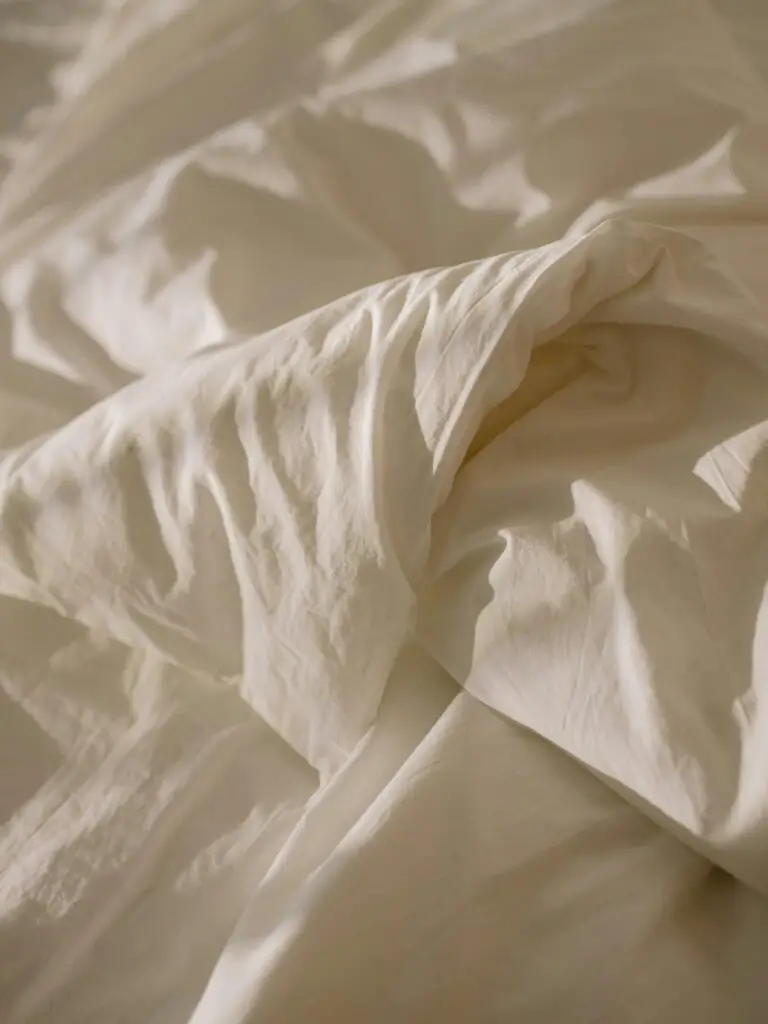
Frequently Asked Questions
When it comes to unwanted roommates, bed bugs rank high on the list. And one of the most pressing inquiries we all have is – can you see bed bugs? Whether you’re nervous about those pesky critters invading your sleeping space or curious after waking up with a series of itchy marks, let’s dive into the frequently asked questions surrounding these exasperating insects.
Are Bed Bugs Visible to the Human Eye?
Indeed, the good news is that bed bugs are not microscopic. Adult bed bugs, in particular, are about the size of an apple seed and can certainly be spotted if you know where to look. Picture this: you’re changing your sheets and notice small, brownish insects leisurely strolling on your mattress. That’s them – bed bugs caught in the act! Nymphs (baby bed bugs), however, are smaller and lighter in color, making them a bit trickier to spy with the naked eye.
Where Should I Check for Bed Bugs?
If you suspect an invasion, start by inspecting your bed. These creatures adore the cozy warmth that beds and bedding offer. Peek into the seams of your mattress, around the bed frame, and even behind the headboard. Real-life scenarios have shown that bed bugs can also hide in places people often overlook, like the inside of book stands, electrical outlets, and cracks in wallpaper. Remember, they’re called bed bugs, but they’re not confined to the bed!
What Are the Signs of a Bed Bug Infestation?
You don’t need to catch them red-handed (or should we say red-bellied) to know they’re there. Tell-tale signs include tiny blood spots on your sheets, which result from their nighttime feasting. Another giveaway is their droppings, resembling black pepper sprinkled across your bed. If you detect a sweet, musty odor or find shed skins, it’s time to take action.
And speaking of signs, sometimes a visual encounter is worth a thousand words. Here is an image illustrating what you might come across if those bitty bedfellows take up residence in your home:

How Can I Prevent Bed Bugs from Entering My Home?
Prevention is key. Keep a vigilant eye when travelling, as these critters love to hitch a ride on luggage and clothing. Frequently vacuuming your home and decluttering can also make a difference, reducing the nooks and crannies they use as hideouts. Encasing your mattress and pillows with protective covers can block them from making your bed their permanent address.
If you’re here because you woke up feeling like a buffet for bugs, we hope you now have a clearer vision (pun intended) of how to spot and stop these tiny intruders. Remember, seeing bed bugs is possible, and with these insights, you may just catch them in the act—before they catch another free meal off you!
